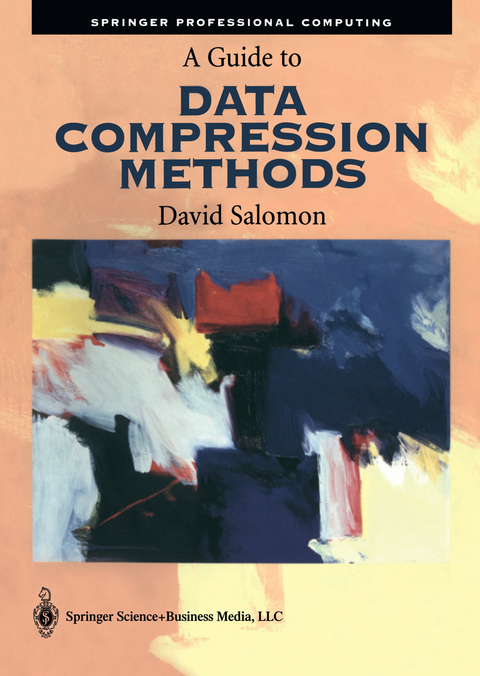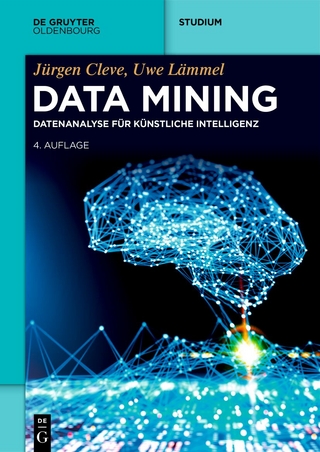
A Guide to Data Compression Methods
Springer-Verlag New York Inc.
978-0-387-95260-4 (ISBN)
In 1829, Louis Braille, a young organist in a Paris church, blind since age 3, invented the well-known code for the blind, still in common use today all over the world and named after him. Braille himself modified his code in 1834, and there have been several modifications since. However, the basic design of this code, where each character is represented by a group of 3 x 2 dots, has remained intact. The dots are embossed on thick paper and each can be raised or flat (i. e. , present or absent). Each dot is therefore equivalent to one bit of information. As a result, the Braille code (Figure 1) is a 6-bit code and can therefore represent 64 symbols (the code of six flat dots indicates a blank space). Braille's followers extended the capabilities of his code in several ways. One im portant extension is contractions. These are letters that, when they stand alone, mean words. For example, the letter "b" standing alone (or with punctuation) means the word "but," the letter "e" standing alone means "every," and "p" means "people. " Another extension is short-form words. These are combinations of two or more codes that mean an entire word (short-form words may contain contractions). For example, "ab" means "about," "rcv" means "receive," and "(the)mvs" means "themselves. " (The "the" in parentheses is a contraction, dots 2-3-4-6. ) Figure 2 shows some examples of these special codes.
1. Statistical Methods.- 1 Entropy.- 2 Variable-Size Codes.- 3 Decoding.- 4 Huffman Coding.- 5 Adaptive Huffman Coding.- 6 Facsimile Compression.- 7 Arithmetic Coding.- 8 Adaptive Arithmetic Coding.- 2. Dictionary Methods.- 1 LZ77 (Sliding Window).- 2 LZSS.- 3 LZ78.- 4 LZW.- 5 Summary.- 3. Image Compression.- 1 Introduction.- 2 Image Types.- 3 Approaches to Image Compression.- 4 Intuitive Methods.- 5 Image Transforms.- 6 Progressive Image Compression.- 7 JPEG.- 8 JPEG-LS.- 4. Wavelet Methods.- 1 Averaging and Differencing.- 2 The Haar Transform.- 3 Subband Transforms.- 4 Filter Banks.- 5 Deriving the Filter Coefficients.- 6 The DWT.- 7 Examples.- 8 The Daubechies Wavelets.- 9 SPIHT.- 5. Video Compression.- 1 Basic Principles.- 2 Suboptimal Search Methods.- 6. Audio Compression.- 1 Sound.- 2 Digital Audio.- 3 The Human Auditory System.- 4 Conventional Methods.- 5 MPEG-1 Audio Layers.- Joining the Data Compression Community.- Appendix of Algorithms.
From the reviews:"The author has done an excellent job. He has written a practical guidebook that covers the range of compression issues, from arithmetic compression to wavelet compression, passing through compression methods for static images, video, and audio. The mathematical framework used in comprehensive without being messy. The author describes every method with no more than the necessary mathematical theory. He also provides easy-to-follow examples, which solve the few doubts the reader might have after reading the theory." --Computing Reviews"The current book is intended for people interested in a basic understanding of the increasingly important field of data compression … . this book is nicely written and well organized. … the author has done a very good job in explaining all these complicated concepts, and presenting related algorithms and their analysis, with a minimal amount of mathematics. This is remarkable. Another good feature of this book is that… it contains many examples that are well chosen, easy to follow, and real." (Zhizhang Shen, Zentralblatt Math, Vol. 996 (21), 2002)
| Reihe/Serie | Springer Professional Computing |
|---|---|
| Zusatzinfo | XII, 295 p. |
| Verlagsort | New York, NY |
| Sprache | englisch |
| Maße | 178 x 254 mm |
| Themenwelt | Informatik ► Datenbanken ► Data Warehouse / Data Mining |
| Informatik ► Theorie / Studium ► Kryptologie | |
| ISBN-10 | 0-387-95260-8 / 0387952608 |
| ISBN-13 | 978-0-387-95260-4 / 9780387952604 |
| Zustand | Neuware |
| Haben Sie eine Frage zum Produkt? |
aus dem Bereich


